The Power of Metacognition in Education: 4 Effective Ways Teachers Can Help Students Think Critically
Introduction
The classroom is no longer just a place for delivering lessons. As the educational landscape evolves, creating spaces where learners can develop critical thinking skills is more important than ever. This is where metacognition in education comes in. More than just absorbing information, students need to understand how they learn.
When students engage in metacognition, they become empowered learners who can assess their own progress with intent—not simply to complete tasks but to truly grow. This transformative approach in modern classrooms not only supports academic success but also lays a strong foundation for lifelong learning.
What is Metacognition in Education?
Metacognition is the process of “thinking about thinking.” It involves self-awareness, monitoring, and regulating one’s cognitive processes to enhance learning outcomes. In the context of education, it plays a crucial role in helping learners retain information more effectively and become aware of their own learning strategies.
Recognizing what metacognition is sets the stage, but understanding why it’s vital is where its true impact becomes clear.
Why Is Metacognition in Education Needed?
Metacognition is a game-changer for students’ academic and personal development. Here’s why it deserves a central role in education:
- It cultivates independent learners. Students equipped with metacognitive skills can plan, and adjust their strategies without constant guidance. This self-reliance translates to success both inside and outside the classroom.
- It encourages active learning over passive memorization. Metacognition in education pushes students to engage deeply with material, and connect new knowledge to what they already know. This leads to meaningful understanding and long-term retention.
- It enhances problem-solving skills. Reflecting on thought processes helps students break down complex problems into manageable steps, and refine their approaches when faced with obstacles.
- It promotes resilience through self-awareness. When learners recognize why they struggle and what they can do differently, they’re less likely to give up. Instead, they develop a growth mindset, seeing challenges as opportunities to improve.
- It prepares students for lifelong learning. In a world where skills and knowledge evolve rapidly, the ability to adapt and reflect on one’s learning is invaluable. Metacognition equips students to thrive in any environment by making intentional, informed decisions about how they grow.
Furthermore, at the EduTech Asia 2024 conference, experts highlighted that students equipped with metacognitive skills outperform their peers in various academic settings.
“Metacognition in education is a game-changer for learning. Through our global research project with Boston College, we’re discovering that students who develop metacognitive skills are far better prepared learners and problem solvers. Students who understand how they think best, and why, have an incredible skillset to draw from throughout their personal and professional lives.”
– Raquel Thomson, Deputy Head of Primary at Nord Anglia International School Hong Kong
Highly Curated Strategies for Teachers to Encourage Metacognitive Thinking Among Students
1. Teach Students to Set Specific Learning Goals
What It Is: Setting specific learning goals involves guiding students to define clear, actionable objectives for their learning activities. Instead of vague aims like “study for the test,” students articulate precise outcomes, such as “identify three key causes of the Civil War and summarize each in a paragraph.“
How to Do It: Start by teaching students how to break down large tasks into smaller, achievable steps. For instance, when assigning a research project, help them outline goals for each stage, such as:
- Day 1: Select a topic and gather initial resources.
- Day 2: Identify three subtopics to focus on.
- Day 3: Draft an outline for the project.
Encourage students to use tools like goal-setting worksheets or digital planners to organize their objectives. Additionally, create opportunities for them to share their goals with peers or the class, fostering accountability and collaboration.
2. Incorporate Reflection Breaks During Lessons
What It Is: Incorporating reflection questions throughout lessons encourages students to assess what they’ve learned, and solidify their understanding. Reflection breaks like so help them develop the habit of self-monitoring, a key aspect of metacognition in education, and give them the opportunity to connect new information with prior knowledge.
How to Do It: All throughout your lectures, dedicate a few minutes for students to reflect on their learning by responding to guiding questions. For example:
- What is the most important idea you’ve learned so far?
- What part of today’s lesson is still unclear to you?
- What strategy did you use to understand the material better?
You can have students respond in writing, discuss their thoughts with a partner, or share their reflections with the class, depending on the classroom dynamic.
Create AI-Generated Reflective Prompts in Seconds with Edcafe AI
A tip: Edcafe AI makes incorporating reflection questions into your lesson plans easier with its AI-driven lesson plan generator. It automatically includes reflective prompts in your lesson plan outline, alongside all the curated elements already included.
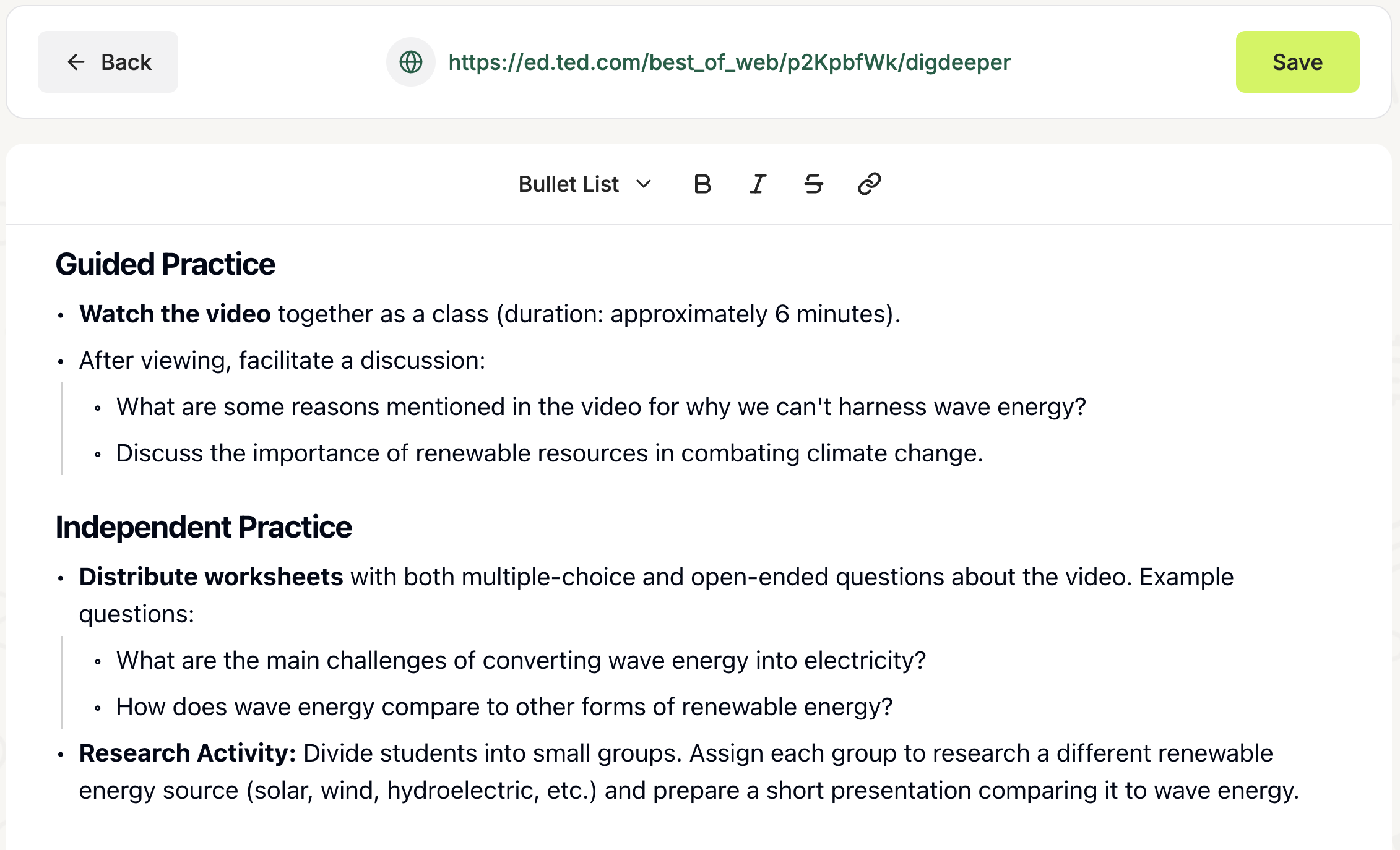
data-title="Create AI lesson plans with Edcafe AI for free"
data-description="Start creating teaching content in seconds with Edcafe AI. Sign up for a forever free account today."
data-product="edcafe"
>
No further prompting is needed. Simply input any source—whether from a simple topic, text, a webpage link, or even an existing document—and Edcafe AI will provide you with a complete, smart, end-to-end lesson plan. These plans include dedicated sections such as:
- Learning Objectives: Outlining clear goals for student outcomes.
- Materials and Resources: Listing necessary materials, making it easy to prepare for the lesson.
- 360 Lesson Procedure: A complete guide from lesson hooks to guided practice, differentiation strategies, and closing activities.
- Reflection Questions: Prompts that help students think critically about the material, deepening their understanding.
- Session Conclusion: Summarizing key points to reinforce learning and provide closure.
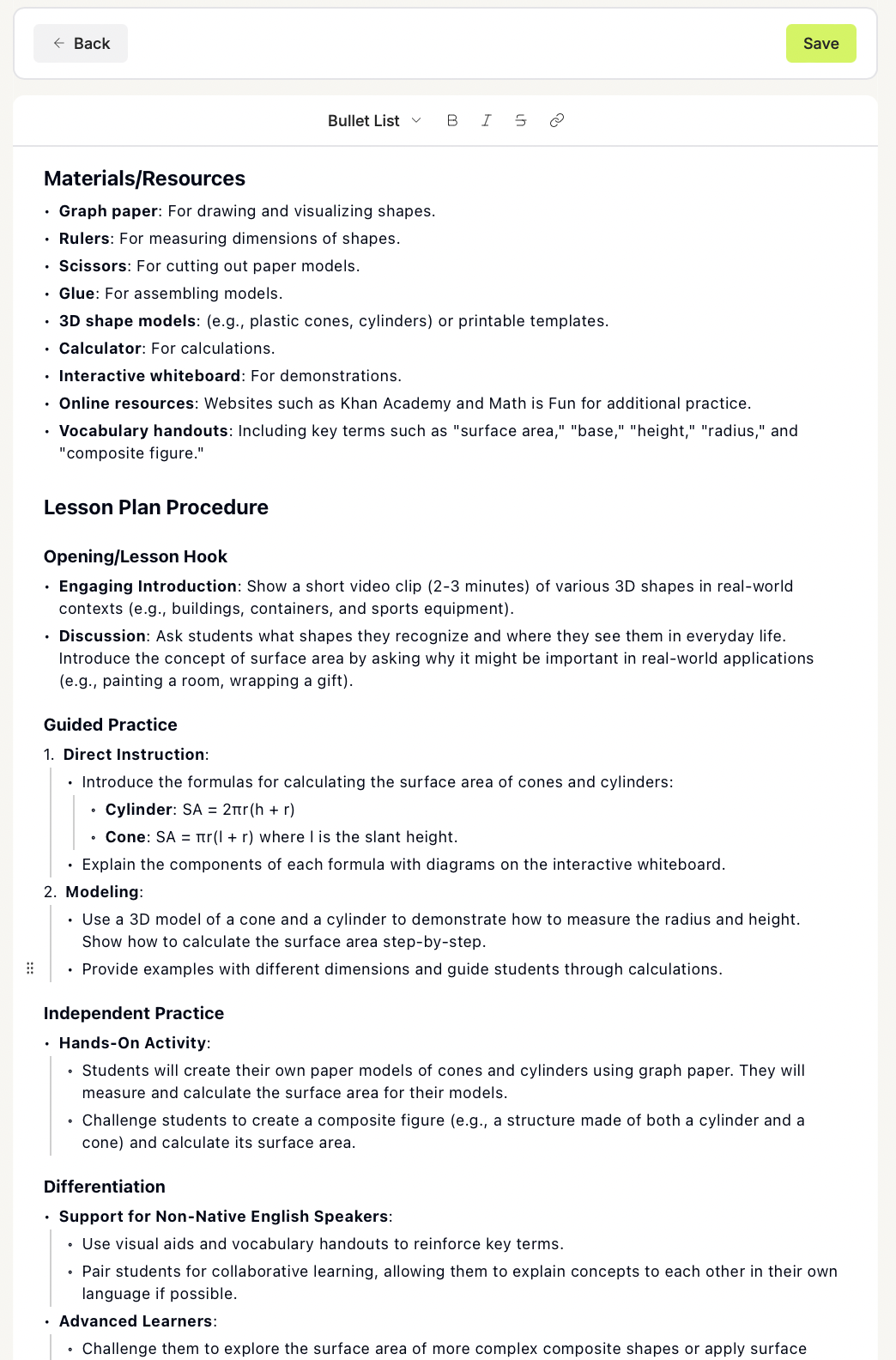
The best part is that Edcafe AI allows you to align your lesson plans with standards, ensuring that your teaching remains focused and effective.
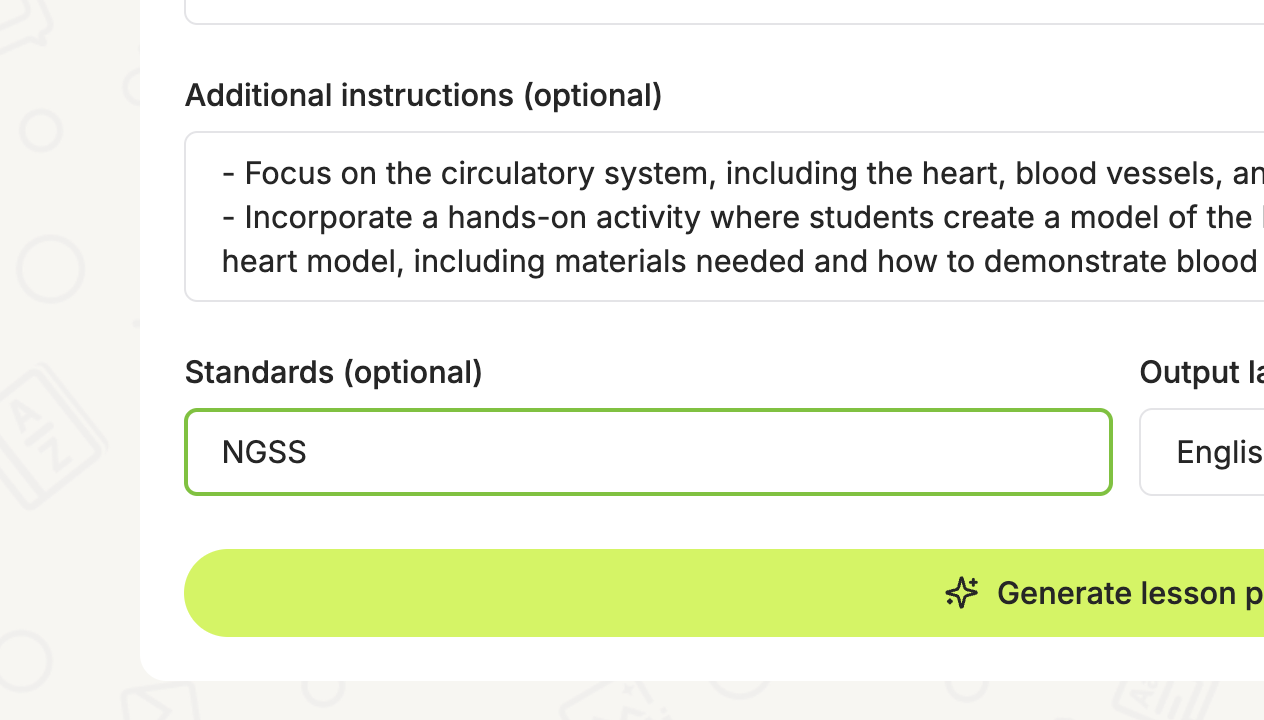
What’s more, you can save your AI-generated lesson plans so you don’t have to recreate them every time. Alongside this is being able to easily share your plans with your co-teachers, making it simple for them to duplicate the plans and adapt them to their own classes—much like templates.
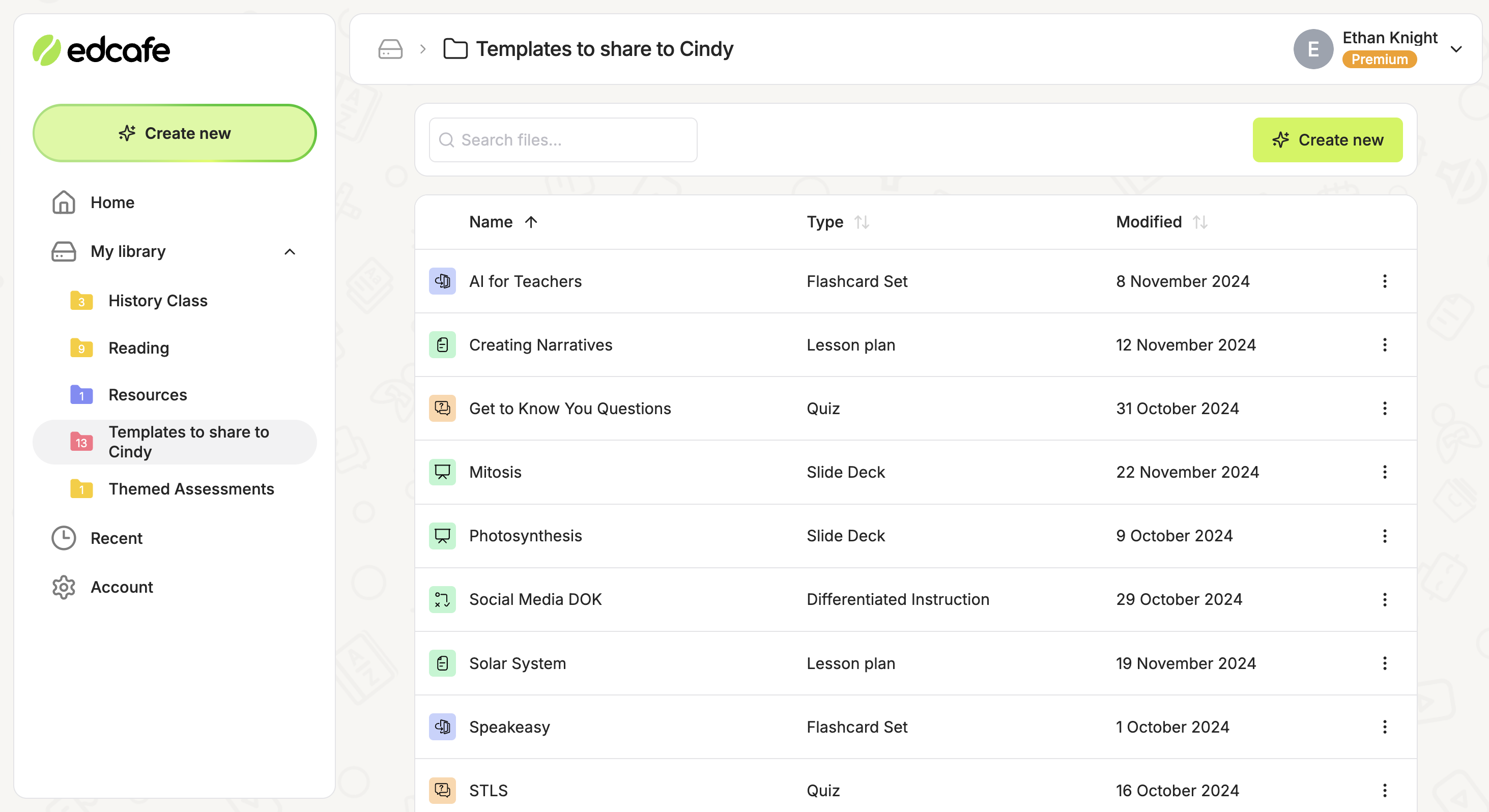
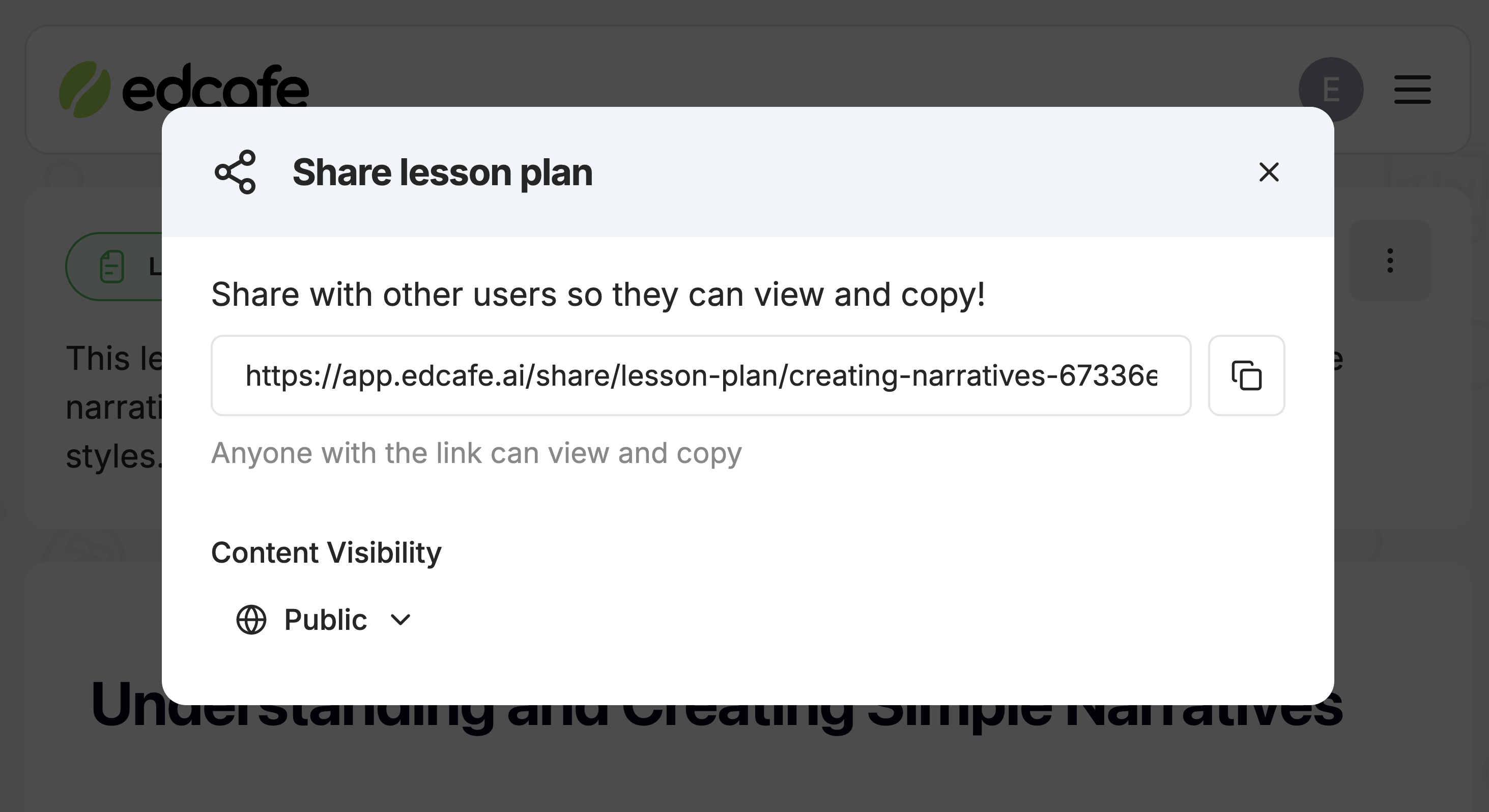
data-title="Create AI lesson plans with Edcafe AI for free"
data-description="Start creating teaching content in seconds with Edcafe AI. Sign up for a forever free account today."
data-product="edcafe"
>
Comments
Post a Comment